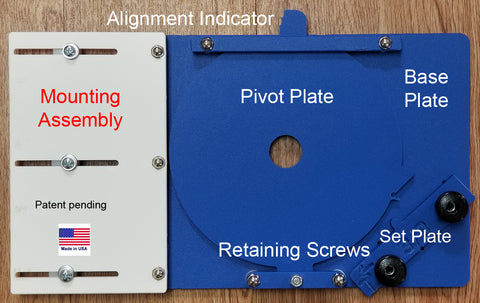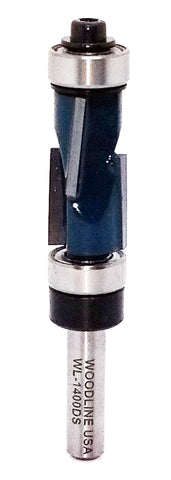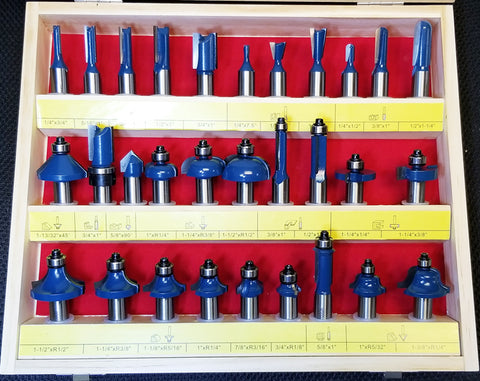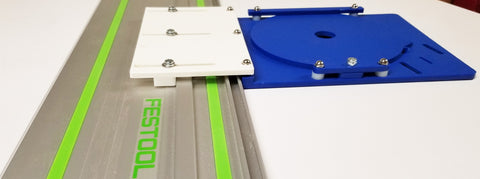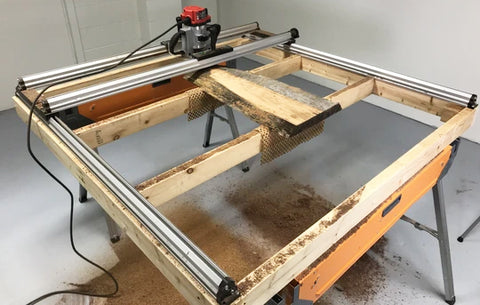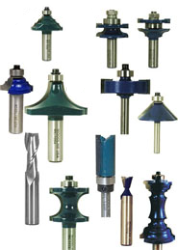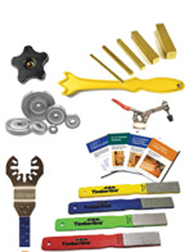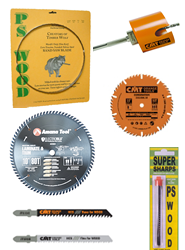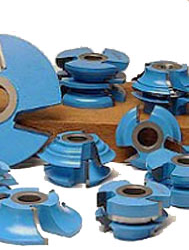Novice/Beginners Guide to Router Bits
Router bits come in many sizes and shapes and their uses vary depending on the application. So the first question we get is what bits will I need to get started after getting my router. This is a very personal question because all of us go in a different direction when choosing our woodworking paths. Some of us will go for furniture while others make toys and gadgets. The following is here to explain the basic routers and what they do.
Flush trim router bits do exactly as it sounds. It is used to trim a board back to a specific edge. The bearing is on the tip of these types of bits and is used either in a held hand or router table setup. The bearing being the same size as the router bits cutting diameter allows for a precise finish. This type of bit is most commonly used when following templates and patterns.
Pattern bits do exactly the same as flush trim bits but the bearing is on the shank side this time. Once again following a template or pattern is the best use of a pattern bit. While it can be used in router table most of the time it is bought to go in handheld application.
Straight bits come in many different diameters making it a must-have for the shop. Straight bits can be used for grooves, dadoes, rabbets, mortises, and inlays. With many diameters and lengths combinations available, we are sure you will find the one you need for your project.
Rabbeting and Slot Cutting Router Bits
Rabbeting router bits are used to create well, “rabbets” on the edge of a board. This allows you to put a mating piece into rabbet making a joint for pieces to connect. Rabbeting bits can be used with many different bearings to produce different depths of cuts into your workpiece. Slot cutters are used in the same way but often have more teeth and a greater depth of cut.
Roundover bits are another router bit that does exactly like it sounds it rounds wood over. The roundover bits allow you to cut a precise shape based on the radius you select. Radius can be from a 1/16” to 1-1/4” allowing for almost any project. Roundovers are also used to break edges and give edge detail to projects. The bearing can be changed to give more detail to a project.
Specialized router bits can range from beehive bits to cabinet door router bits. Edge detail router bits are ranging from ogee to triple roundovers. Joinery bits come in a variety of setups from tongue and groove to lock miters. Dovetails and spirals are other commonly used router bits. Routers bits are like ingredients, there is a flavor for every style.
Size Matters
Large router bits can only be used in router tables. Most experts suggest once you go over 2” diameter, the bit should never be used by the handheld router but only in tables. This will ensure your safety while woodworking. A good example of this is cabinet door bits. We provide a speed chart as well on our instructions page. The larger the bit, the larger the shank as well. Many router bits come in both ¼” and ½” shank, so larger molding, cabinet, and joinery bits do not. Having both ¼” and ½” collets for your router is a necessity at some point.
Always remember if you have a question call (800-472-6950) or email us (sales@woodline.com)

